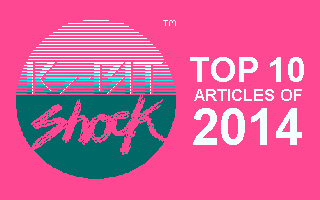 Composing music for videogames and other forms of visual media requires the individual writing the music to take a different approach from writing songs. As video games more often than not follow a concept, or some form of storytelling, this requires reinforcement in aspects of its creation, such as the music.
Composing music for videogames and other forms of visual media requires the individual writing the music to take a different approach from writing songs. As video games more often than not follow a concept, or some form of storytelling, this requires reinforcement in aspects of its creation, such as the music.
Writing a popular song can consist of a few chords and a melody. Often these can be chords that sound nice with the melody that is being sung. However thought is often not given as to how the melody and chords can interact to portray a certain emotion, and therefore have psychological effect on the listener. When it comes to composing for visual media though, thought needs to be given to this, and how both the melody and chords can shape the individual’s experience of what they are either playing or watching.
This is where the idea of an overall concept comes into play. A concept can help paint a picture. Of course when it comes to videogames the concept will come from the developers as they will be the decision makers behind how they want the story to be shaped and the overall outcome. From this though the composer can take away many aspects that can aid in their endeavours. Let me explain further with a game I am currently composing for.  Once Upon A Platform is a challenge based game where the player has to move through levels, avoid obstacles and reach end stages. The developer (Klim Bloom Games) wanted to explore various human emotions throughout the game and provided me with a list of keywords which are to be the names of the various chapters in the game. The chapter names are below:
Once Upon A Platform is a challenge based game where the player has to move through levels, avoid obstacles and reach end stages. The developer (Klim Bloom Games) wanted to explore various human emotions throughout the game and provided me with a list of keywords which are to be the names of the various chapters in the game. The chapter names are below:
- Chapter 0: Rules
- Chapter 1: Time
- Chapter 2: Space
- Chapter 3: Confidence
- Chapter 4: Perseverance
- Chapter 5: Adaptability
- Chapter 6: Self Control
- Chapter 7: Nirvana
When presented with these words as a composer what would your first thoughts be? Mine were, “how can I reinforce the meanings of these words with music?” This question alone opens up a collection of other points that can be addressed, such as:
- What does each of these words mean when relating to human psychology?
- When it comes to the overall audio production, how can each area be reinforced? (For instance, how can reverb and delay be used to reinforce the essence of Space?)
- When would a major key work best and when would a minor key work best?
 Approaching projects like this allows the composer to break down what needs to be taken into consideration when creating the music for the game, in order for it to reinforce the overall concept and story of the game. This can then be taken a step further and when developing the main theme for a game you can take the essence of the concept/story and portray it in a singular piece of music. This was my aim with the below main theme for Once Upon A Platform, to encapsulate the keywords of the chapters. Joe Gilliver – BA Hons (Ocular Audio) Composer | Producer | Sound Designer www.ocularaudio.com
Approaching projects like this allows the composer to break down what needs to be taken into consideration when creating the music for the game, in order for it to reinforce the overall concept and story of the game. This can then be taken a step further and when developing the main theme for a game you can take the essence of the concept/story and portray it in a singular piece of music. This was my aim with the below main theme for Once Upon A Platform, to encapsulate the keywords of the chapters. Joe Gilliver – BA Hons (Ocular Audio) Composer | Producer | Sound Designer www.ocularaudio.com
If you want to know more about Once Upon A Platform and download the free demo, please head over to KlimBoom Games.
I’d like to commend both Thomas from KlimBoom Games & Joe from Ocular Audio for their work on what looks like a cool and fun, neo-retro game. I particularly like the clean, minimalist look while the music matches the on-screen action perfectly – Demos
